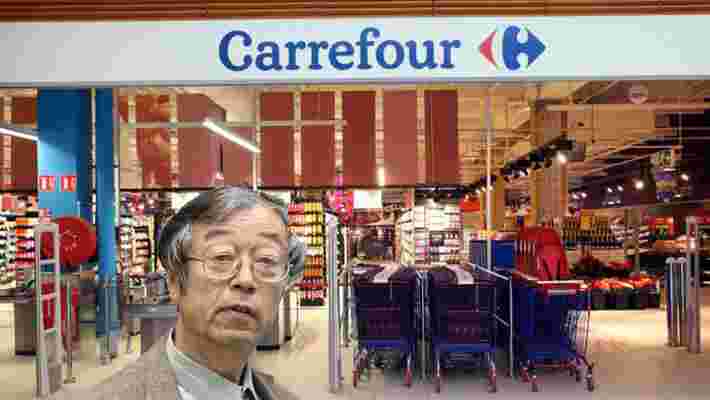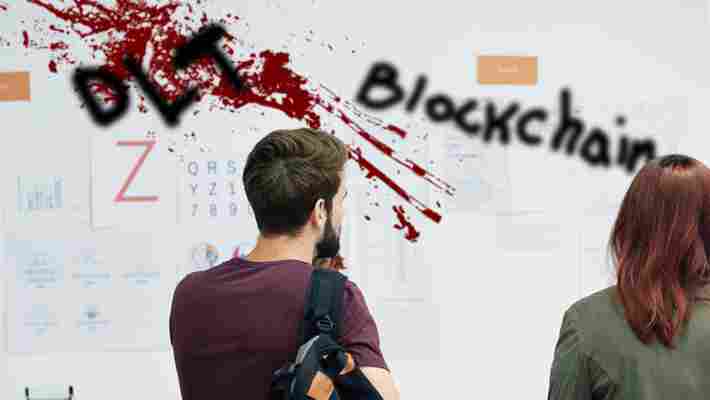Carrefour is betting big on distributed ledger tech. The french supermarket behemoth wants to track 20 percent of all of its in-house products on the blockchain by the end of 2019.

The retailer already uses the technology to track 20 out of its 300 Carrefour-branded products across the supply chain, but it plans to add about 40 more goods to the list over the coming months, Carrefour blockchain program director Emmanuel Delerm told Hard Fork.
The company’s blockchain pilots are currently running in six countries, including France, Italy, Spain, and China. Carrefour customers can access detailed information about the origin of the product they’re buying by simply scanning a QR code on the packaging.
“When we tested this feature in China – we tested it with a Chinese pomelo – we got incredible figures,” Delerm revealed to Hard Fork. “Customers scanned one out of two (or three) pomelos to check where the fruit was coming from.”
Still, Delerm is quick to point out that – culturally speaking – Chinese customers are more prone to trying out new technologies. “In countries like Belgium or Spain, we noticed that customers scanned only about one out of 20 pomelos.”
For now, Delerm says the focus remains on tracking in-house products with blockchain; indeed, Delerm told us Carrefour specifically chose some of its most popular products for the initial pilot. As far as non-Carrefour products go, the company still relies on centralized solutions for supply chain traceability, but that too might change in the near future.
The French supermarket made its first foray into distributed ledgers in 2018, launching a pilot to trace chicken, eggs, and tomatoes on the blockchain. Since then, the company has also experimented with using blockchain to track milk and mashed potatoes across the supply chain.
Although Carrefour partnered with IBM‘s Food Trust initiative for its distributed ledger tracking pilots, Delerm revealed the retailer is also developing its own permissioned blockchain.
Delerm says the supermarket remains devoted to experimenting with blockchain. “The amount of products we track with blockchain will likely increase as the technology continues to make progress,” he added.
Did you know? Hard Fork has its own stage at TNW2019 , our tech conference in Amsterdam. Check it out .
Here’s the difference between blockchain and distributed ledger technology
Blockchain is being explored by a wider and wider audience everyday, and traditional centralized bodies like banks and governments are starting to take interest into what the tech can do for them.

But there is a new term that is starting to crop up more frequently in the cryptocurrency space: distributed ledger technology (or DLT as most call it). And somewhat ironically, it is precisely the bodies that Bitcoin and blockchain aim to subvert that seem to use it the most – banks, governments and large corporations.
The Bank of England announced recently that it is looking to breathe new life into their Real-Time Gross Settlement (RTGS) system, using both blockchain and distributed ledger technology. These words are not interchangeable though, so in instances like this, it’s important that we appreciate their differences. Let’s get into it.
Distributed ledger technology
Distributed ledger technology or DLT for short, is, as the name suggests a database of records that isn’t stored or confirmed by any one central body. Sounds sort of like blockchain doesn’t it? But it’s not.
In DLT, the implementer has greater control over how it is in fact implemented. They could, in principle, dictate the structure, purpose, and functioning of the network that underpins its service. It’s not sounding very decentralized all of a sudden, is it?
That said, DLT is technologically decentralized and relies on similar principles of consensus to blockchain. But, an instance where one body has control over that supposed decentralized network, by principle, isn’t decentralized – from an ideological point of view at least.
A DLT can be considered a first step towards a blockchain, but importantly it won’t necessarily construct a chain of blocks. Rather, the ledger in question will be stored across many servers, which then communicate to ensure the most accurate and up to date record of transactions is maintained.
Some companies that are favouring DLT over a pure blockchain include Google’s, recent partnership with Digital Asset seeks to bring DLT tools to their cloud service customers. Volkswagen also labelled its collaboration with IOTA as an experiment in “distributed ledger technology.”
Blockchain
On the other hand, we have blockchain. Blockchain is in fact a form of distributed ledger with a very specific technological underpinning. As we all know, it’s one that creates an unchangeable ledger of records that is maintained by a decentralised network, where all records are approved by consensus. Cryptographic signing and linking groups of records in the ledger, to form a chain is what sets blockchain apart from DLT. Also, depending on the specific application of blockchain, there is the opportunity for the public and users to have a say in how it’s structured and run.
Take the case of bitcoin as the true example of blockchain and decentralisation. While the technology and its structure is decentralised so is its organisation and development. In DLT the technology is decentralized, but its corporate organisation, may not.
DLT and blockchain are not the same thing
The important thing to note here then, is that these phrases and terms are not interchangeable, even if they may be used as such. Organisations like the Bank of England might favour the use of DLT to distance themselves from the hype and volatility associated to blockchain. Or for the same reason, a corporation may use the word blockchain to capitalise on the interest even if what they are offering isn’t truly, a blockchain.
ConsenSys acquires Infura, the centralizing tech powering Ethereum dapps
Ethereum-focused software firm ConsenSys has fully acquired Infura, the company that’s previously been described as the network’s most centralized layer.

The company announced the acquisition news via a blog post today.
“…We’ve decided that a future inside ConsenSys is the best future for our team, our users and this rapidly emerging ecosystem,” the post reads.
“As a result, we are pleased to announce that ConsenSys has formally acquired all of the rights to Infura and Infura will continue as a wholly owned business unit within ConsenSys,” it adds.
While the acquisition may indeed spell good news for both companies involved, it’s likely it will ruffle feathers among decentralization supporters, following claims about Infura’s alleged centralization.
For one, ConsenSys was founded by Ethereum co-founder Joseph Lubin, who had previously invested in Infura.
Further, as of December last year, Infura was thought to handle approximately 13 billion code requests per day, underpinning most apps running on the Ethereum blockchain.
Michael Wuehler, the company‘s co-founder, told CoinDesk at the time that the firm accounted for “somewhere between 5 and 10 percent of the nodes.”
On one hand, ConsenSys acquiring Infura makes sense, considering it’s the software firm powering Ethereum’s development. It remains to be seen, however, if addressing how centralizing Infura is for the network becomes a priority.
Want more Hard Fork? Join us in Amsterdam on October 15-17 to discuss blockchain and cryptocurrency with leading experts.











